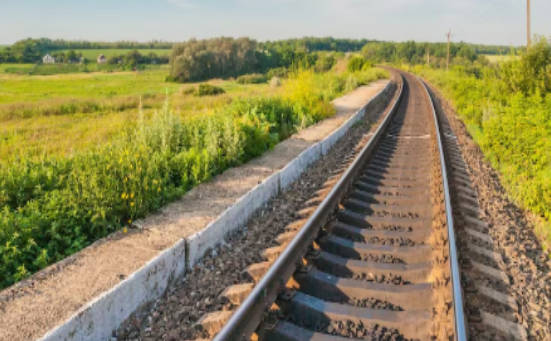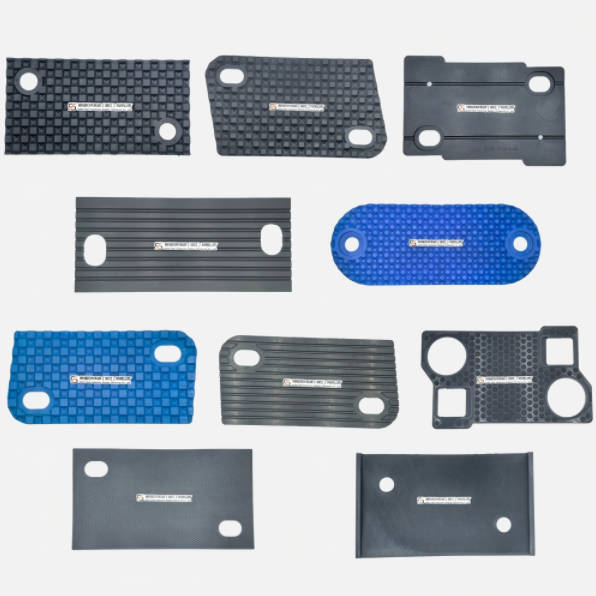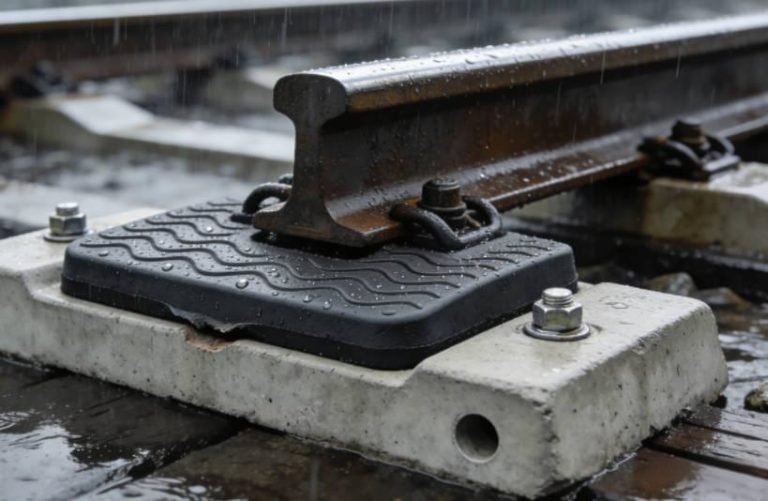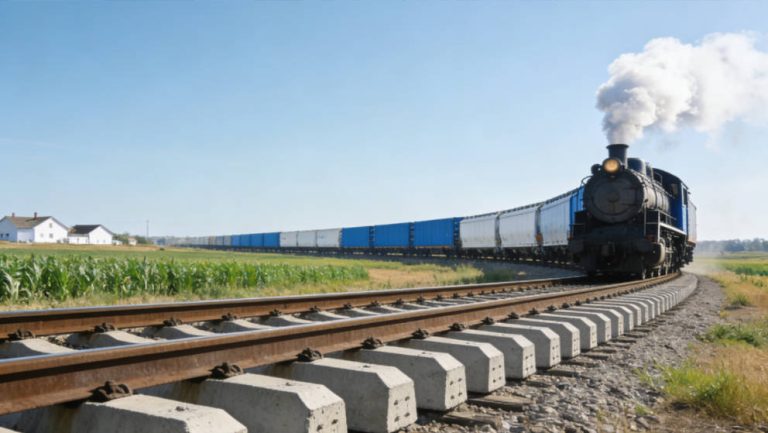Rubber pads play a role, in today’s railway networks by serving as elements that enhance operational efficiency and safety levels to their fullest potential. They offer features, like reducing vibrations and noise levels while also improving stability which ultimately leads to a comfortable journey and prolongs the lifespan of different railway parts.
The Role of Rubber Pads in Railway Systems
Importance of Vibration Dampening
When trains travel along tracks they create vibrations that impact both the train and the surrounding infrastructure. Rubber pads serve as buffers by absorbing and dispersing these vibrations. This damping of vibrations plays a role, in maintaining track alignment and minimizing damage to both the trains and infrastructure. By reducing the impact of vibrations railway operations can enhance the quality of rides resulting in comfort, for passengers and lower maintenance expenses.
Noise Reduction Capabilities
Rubber pads not only help reduce vibrations but also play a role, in decreasing the noise generated by trains in operation settings like urban areas where unwanted sounds can be quite disruptive to residents and passengers alike. Rail operators can effectively lower noise levels by using rubber pads which ultimately improve the experience for those on board and the surrounding communities. Reduced noise pollution is vital for maintaining railway operations that are considerate of residential neighborhoods and contribute to a positive relationship, between railways and the public.
Safety Benefits Provided by Rubber Pads
Rubber pads play a role, in enhancing the efficiency and safety of railway systems by providing a stable environment for the smooth movement of trains due, to their distinct material characteristics and engineered structure.
Improving Track Stability
Rubber pads play a role, in ensuring the stability of railway tracks by distributing the weight of trains on the track structure to prevent problems like track buckling and misalignment that could result in hazardous derailments. It is vital to invest in high-quality rubber pads to uphold track stability and guarantee that the railway infrastructure remains resilient, amidst train operations.
Prolonging the Lifespan of Railway Components
Rubber pads serve a purpose, beyond safety—they also play a role in preserving railway infrastructure over time by minimizing vibrations and impacts that can strain essential components, like rails and ties. SAFE‘s top-notch rubber pads are designed with the railway industry in mind to ensure longevity and dependability in demanding conditions. When it comes to performance optimization SAFE products bolster the robustness of the railway network as a whole providing solutions that not just meet but surpass industry norms.
Ultimately incorporating rubber pads into railway structures is crucial, for enhancing effectiveness and ensuring the safety and durability of rail elements. Taking into account the benefits of reducing vibrations and noise levels enhancing track stability and extending the lifespan of rail components railway operators can make well-informed choices when planning their maintenance and enhancement efforts. If you are in search of options SAFE offers a variety of rubber pad solutions tailored for top-notch performance in railway setups guaranteeing efficient operations both presently and, in the future.
Energy Efficiency and Cost Savings
In the field of railways focusing on energy efficiency and saving costs is crucial, for companies looking to enhance their profits while supporting eco methods. By putting in place measures like rubber pads, substantial savings, in operating costs can be achieved, which in turn enhances the performance of railway networks.
Lowering Operational Costs
The implementation of rubber pads plays a role, in reducing expenses through various means; primarily by offering effective vibration dampening to prevent the wear and tear of tracks and other railway components. These measures result in reduced maintenance requirements and frequent track replacements, over the term. Additionally, the improved stability provided by rubber pads leads to disruptions which ensure trains run more smoothly and efficiently.
Besides cutting down on maintenance costs rubber pads also play a role, in decreasing energy usage. Trains fitted with top-notch rubber pads enjoy a ride on the tracks leading to rolling resistance. This decrease in friction allows trains to run efficiently using energy to reach the same speeds. As a result, railway companies can make savings, on energy expenses, which can then be allocated to address important infrastructure requirements.
Extending Track Life Span
Using rubber pads in railway infrastructure has the advantage of prolonging the life of the tracks, by absorbing shocks and vibrations to maintain the rail system’s integrity and reduce the need, for frequent track inspections and costly repairs.
Rubber pads from SAFE are known for their resilience, in environments and ability to maintain performance, over time without issues. Their impact-absorbing qualities help reduce stress on track materials and structures while enhancing the durability of railway systems. This longevity not benefit operators financially. Also supports sustainable railway operations by reducing the frequency of costly replacements and repairs.
Implementing SAFE’s Rubber Pad Solutions for Railways
To meet the growing need, for railway systems efficiency improvements in the transportation sector SAFE provides a selection of specialized rubber pads specifically crafted for use in the railway industry sector.. As a player within this industry, SAFE delivers cutting-edge solutions engineered to improve efficiency and safety measures, for railway operators.
Overview of SAFE’s Product Range
SAFE offers a range of rubber pads designed for use, in railway infrastructure applications. These include pads for reducing vibrations and others tailored to handle loads. Safe focuses on providing solutions to meet the needs and preferences of the industry. The design of each rubber pad is carefully crafted to meet the standards of the railway sector while being compatible, with a range of rail designs.
With a focus, on excellence and dedication to quality standards, in mind, SAFE utilizes cutting-edge material technology and production methods to craft rubber pads that excel in performance. Their range is tailored to suit railway settings be it rural landscapes and is designed to endure a wide spectrum of weather conditions guaranteeing reliability and longevity under any external circumstances.
Key Features and Benefits of SAFE’s Rubber Pads
SAFE’s rubber pads provide multiple benefits that are instrumental for railway operators. One key feature is their high resilience, which effectively absorbs energy spikes caused by moving trains. This capability minimizes track wear and reduces the likelihood of costly downtimes due to infrastructure failures. Additionally, SAFE’s rubber pads are designed to maintain performance across a diverse range of temperatures, ensuring they work effectively in any climate.
Another notable aspect of SAFE’s rubber pads is their ease of installation. The products are designed to be user-friendly, allowing for quicker installation, which minimizes disruption to railway operations. This practical aspect ensures that railway operators can implement these solutions without significant delays, effectively enhancing operational efficiency.
Furthermore, SAFE recognizes the importance of sustainability in modern railway systems. Their rubber pads are crafted from environmentally friendly materials, reflecting a commitment to reducing the carbon footprint associated with railway operations. By choosing SAFE’s rubber pads, operators not only invest in efficiency but also contribute to eco-friendly practices within the industry.
Case Examples and Industry Adoption
Several case studies illustrate the successful implementation of SAFE’s rubber pads within various railway projects. For example, in a recent project involving urban rail systems, SAFE’s rubber pads were adopted to tackle significant vibration and noise challenges faced by railway operators. The result was a marked improvement in passenger ride quality and a substantial decrease in noise levels, enhancing community relations.
In addition to urban rail cases, many freight rail operators have incorporated SAFE’s rubber pads into their infrastructure to extend track lifespan and reduce long-term maintenance costs. By focusing on the durability and performance of their products, SAFE has seen a growing adoption rate among key players in the railway sector.
In conclusion, by leveraging advanced rubber pad technology from SAFE, railway operators can significantly enhance energy efficiency, reduce operational costs, and extend the longevity of their infrastructure. Investing in SAFE’s carefully engineered rubber pads is a proactive step toward fostering safe and efficient railway operations, contributing positively to the future of railway systems.






